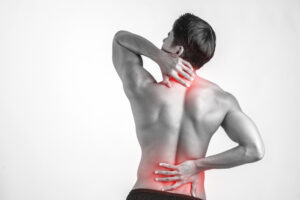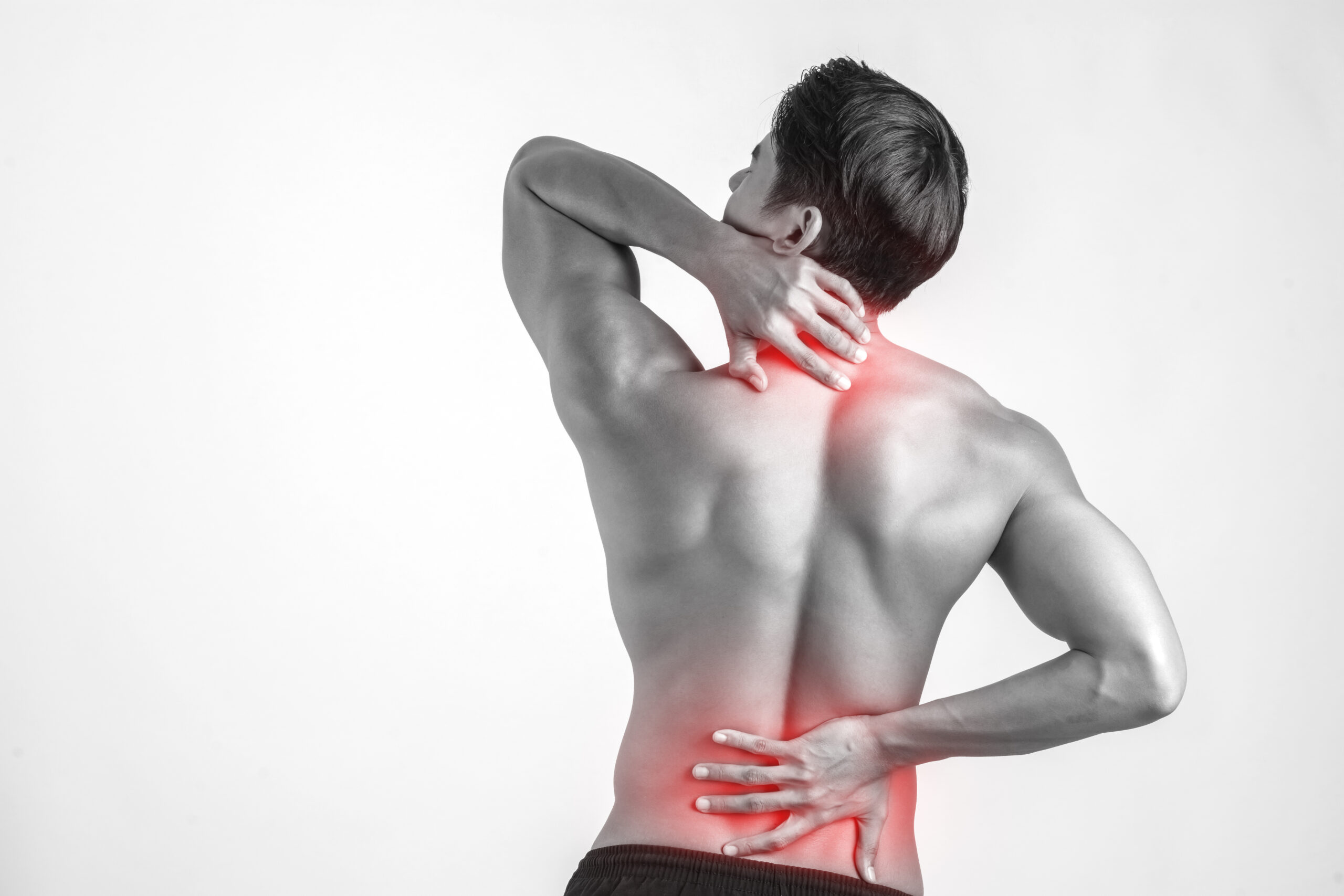Pain Management is a medical approach that draws on disciplines in science and alternative healing to study the prevention, diagnosis, and treatment of pain.
Analgesics are medications used in the management and treatment of pain. They include several classes of medications (acetaminophen, nonsteroidal anti-inflammatory drugs, antidepressants, antiepileptics, local anesthetics, and opioids)

Key pain management strategies include:
- pain medicines.
- physical therapies (such as heat or cold packs, massage, hydrotherapy and exercise)
- psychological therapies (such as cognitive behavioural therapy, relaxation techniques and meditation)
- mind and body techniques (such as acupuncture)
- community support groups.
Types of Pain :
- Nociceptive Pain: Typically the result of tissue injury.
- Inflammatory Pain: An abnormal inflammation caused by an inappropriate response by the body’s immune system.
- Neuropathic Pain: Pain caused by nerve irritation.
- Functional Pain: Pain without obvious origin, but can cause pain.
PAIN is a very common condition. The occurrence of pain rises as people get older, and women are more likely to experience pain than men.
There are 2 main types of pain:
- Acute pain – a normal response to an injury or medical condition. It starts suddenly and is usually short-lived.
- Chronic pain – continues beyond the time expected for healing. It generally lasts for longer than 3 months.
Pain may be anything from a dull ache to a sharp stab and can range from mild to extreme. You may feel pain in one part of your body or it may be widespread.
The most common causes of pain in adults include:
- injury
- medical conditions
- surgery
Pain is a complex protective mechanism.
The body has pain receptors that are attached to 2 main types of nerves that detect danger. One nerve type relays messages quickly, causing a sharp, sudden pain. The other relays messages slowly, causing a dull, throbbing pain.
Some areas of the body have more pain receptors than others.
If pain receptors in the skin are activated by touching something dangerous (for example something hot or sharp), these nerves send alerts to the spinal cord and then to part of the brain called the thalamus.
Sometimes the spinal cord sends an immediate signal back to the muscles to make them contract. This moves the affected body part away from the source of danger or harm.
Many non-medicine treatments are available to help you manage your pain. A combination of treatments and therapies is often more effective than just one.
Some non-medicine options include:
- Heat or cold
- Physical therapies
- Massage
- Relaxation and stress management techniques
- Cognitive behaviour therapy
- Acupunture
- Transcutaneous electrical nerve stimulation (TENS) therapy
Working of Pain medicines
Pain medicines work in various ways. Aspirin and other NSAIDs are pain medicines that help to reduce inflammation and fever. They do this by stopping chemicals called prostaglandins. Prostaglandins cause inflammation, swelling and make nerve endings sensitive, which can lead to pain.
Prostaglandins also help protect the stomach from stomach acid, which is why these medicines can cause irritation.
Opioid medicines work in a different way. They change pain messages in the brain, which is why these medicines can be addictive.
Always follow instructions for taking your medicines safely and effectively. By doing so:
- your pain is more likely to be well managed
- you are less likely to need larger doses of medicine
- you can reduce your risk of side effects
Precautions:
Treat over-the-counter pain medicines with caution, just like any other medicines. It’s always good to discuss any medicines with your doctor or pharmacist.
- Don’t self-medicate with pain medicines during pregnancy
- Take care if you are elderly or caring for an older person.
- When buying over-the-counter pain medicines, speak with a pharmacist about any prescription and complementary medicines you are taking so they can help you choose a pain medicine that is safe for you.
- See your doctor or healthcare professional for proper treatment for sport injuries.
- Don’t use pain medicines to ‘tough it out’.
Pain Management CPT Code Changes 2022
In 2022, two CPT codes have been deleted and replaced with new codes that provide more granularity about procedures performed.
Deleted codes:
- 01935(Anaesthesia for percutaneous image guided procedures on the spine and spinal cord; diagnostic)
- 01936(Anaesthesia for percutaneous image guided procedures on the spine and spinal cord; therapeutic)
New codes 01937-01942 identify the type of surgical procedure for which anaesthesia is being performed and whether the procedure is performed on the cervical or thoracic spine or the lumbar or sacral spine.
New codes:
There are nine new CPT codes for 2022 for anaesthesia and pain medicine. New codes 01937-01942 categorize the type of surgical procedure for which anaesthesia is being provided and whether the procedure is performed on the cervical or thoracic spine or the lumbar or sacral spine.
- 01937Anaesthesia for percutaneous image-guided injection, drainage or aspiration procedures on the spine or spinal cord; cervical or thoracic
- 01938Anaesthesia for percutaneous image-guided injection, drainage or aspiration procedures on the spine or spinal cord; lumbar or sacral
- 01939Anaesthesia for percutaneous image-guided destruction procedures by the neurolytic agent on the spine or spinal cord; cervical or thoracic
- 01940Anaesthesia for percutaneous image-guided destruction procedures by the neurolytic agent on the spine or spinal cord; lumbar or sacral
- 01941Anaesthesia for percutaneous image-guided neuromodulation or intravertebral procedures (eg, kyphoplasty, vertebroplasty) on the spine or spinal cord; cervical or thoracic
- 01942Anesthesia for percutaneous image-guided neuromodulation or intravertebral procedures (eg, kyphoplasty, vertebroplasty) on the spine or spinal cord; lumbar or sacral
- 64628Thermal destruction of the intraosseous basivertebral nerve, including all imaging guidance; first 2 vertebral bodies, lumbar or sacral
- 64629Thermal destruction of the intraosseous basivertebral nerve, including all imaging guidance; each additional vertebral body, lumbar or sacral (List separately in addition to code for primary procedure)
- 933193D echocardiographic imaging and postprocessing during transesophageal echocardiography, or during transthoracic echocardiography for congenital cardiac anomalies, for the assessment of cardiac structure
Other Frequently Used Pain Management CPT Codes
Acupuncture CPT Codes
- 97810: Acupuncture, one or more needles, without electrical stimulation, initial 15 minutes of personal one-on-one contact with the patient
- 97811: Each additional 15 minutes of personal one-on-one contact with the patient, with re-insertion of needles
- 97813: Acupuncture, one or more needles, with electrical stimulation, initial 15 minutes of personal one-on-one contact with the patient
- 97814: Each additional 15 minutes of personal one-on-one contact with the patient, with re-insertion of needles
Acupuncture is reported based on 15-minute increments of personal (face-to-face) contact with the patient, not the duration of acupuncture needle(s) placement.
- Report 97810 or 97811 if no electrical stimulation is used during a 15-minute increment, use.
- Report 97813 or 97814 if electrical stimulation of any needle is used during a 15-minute increment
- Report only one code for each 15-minute increment
- Use 97810 or 97813 for the initial 15-minute increment
- Report only one initial code per day
Dry Needling
Dry needling, also called “trigger point acupuncture” is reported using the following CPT code
- CPT code 20560(Needle insertion(s) without injection(s); 1 or 2 muscle(s)
- CPT code 20561(Needle insertion(s) without injection(s); 3 or more muscles)
- When the origin or insertion of a tendon is injected, use 20551 should be used. Injection of the tendon sheath should be reported using 20550.
- CPT instructs that that CPT codes 20552 or 20553 (trigger point injections) are not reportable with CPT codes 20560 or 20561 when performed for the same muscles.
Radiofrequency Ablation
64625 Radiofrequency ablation, nerves innervating the sacroiliac joint, with image guidance (ie, fluoroscopy or computed tomography)
64999 Unlisted procedure, nervous system

